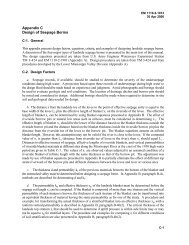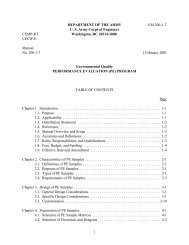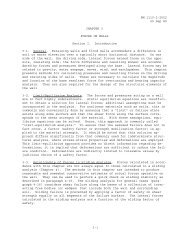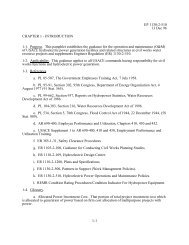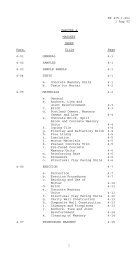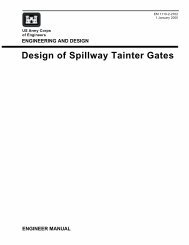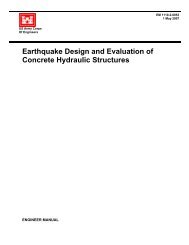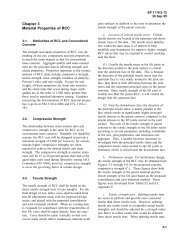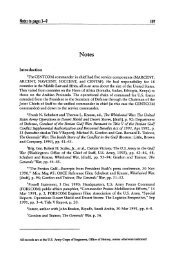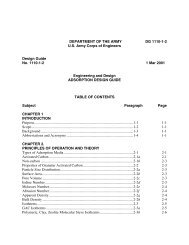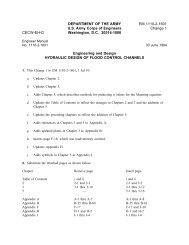Chapter 5 - Publications, US Army Corps of Engineers
Chapter 5 - Publications, US Army Corps of Engineers
Chapter 5 - Publications, US Army Corps of Engineers
Create successful ePaper yourself
Turn your PDF publications into a flip-book with our unique Google optimized e-Paper software.
EM 1110-2-1701<br />
31 Dec 1985<br />
tested. Therefore, only the term rated head should be used in<br />
planning and design studies.<br />
(1) Cavitation and vibration problems limit turbines to a<br />
minimum discharge <strong>of</strong> 30 to 50 percent <strong>of</strong> rated discharge (rated<br />
discharge being discharge at rated head with wicket gates fully open).<br />
This characteristic should be accounted for in power studies, and it<br />
may in some cases influence the size and number <strong>of</strong> units to be<br />
installed at a given site. For example, if a minimum downstream<br />
release is to be maintained at a storage or pondage project for nonpower<br />
purposes, and it is desired to maintain power production during<br />
these periods, a unit must be selected which is capable <strong>of</strong> generating<br />
at the required minimum discharge. For run-<strong>of</strong>-river projects, proper<br />
accounting for minimum discharge is equally important. Streamflows<br />
below the single-unit minimum discharge will be spilled, so flowduration<br />
curves should be examined carefully to determine the size and<br />
number <strong>of</strong> units that will best develop the energy potential <strong>of</strong> a given<br />
site. The example in Section 6-6g illustrates the impact <strong>of</strong> singleunit<br />
minimum turbine discharge on a project’s energy output.<br />
(2) In preliminary power studies, minimum discharge can usually<br />
be ignored, but once a tentative selection <strong>of</strong> unit size or sizes has<br />
been made, a minimum single-unit turbine discharge must be applied to<br />
the energy computation. For more advanced studies, a minimum<br />
discharge based on the data presented in Table 5-1 (Section 5-6i)<br />
can be assumed. Once a specific turbine design has been selected, the<br />
minimum discharge associated with that unit should be used.<br />
(1) The efficiency term used in power studies reflects the<br />
combined efficiencies <strong>of</strong> the turbine and generator. Generator<br />
efficiency is usually assumed to remain constant at 98 percent for<br />
large units and 95 to 96 percent for units smaller than 5 ~.<br />
However, turbine efficiency varies with the operational parameters <strong>of</strong><br />
discharge and head. The efficiency characteristics <strong>of</strong> a turbine vary<br />
with type and size <strong>of</strong> unit and runner design. Figure 5-8 shows<br />
typical performance curves for a Francis turbine.<br />
(2) In reconnaissance level power studies, a fixed efficiency <strong>of</strong><br />
80 to 85 percent may be used to represent the combined efficiency <strong>of</strong><br />
the turbines and generators. A value <strong>of</strong> 85 percent can be applied to<br />
installations where the larger custom-built turbines would be used.<br />
The smaller standardized Francis and tubular turbines and units<br />
requiring gearboxes have lower efficiencies, and an overall efficiency<br />
<strong>of</strong> 80 percent should be used for reconnaissance studies <strong>of</strong> projects<br />
5-18




